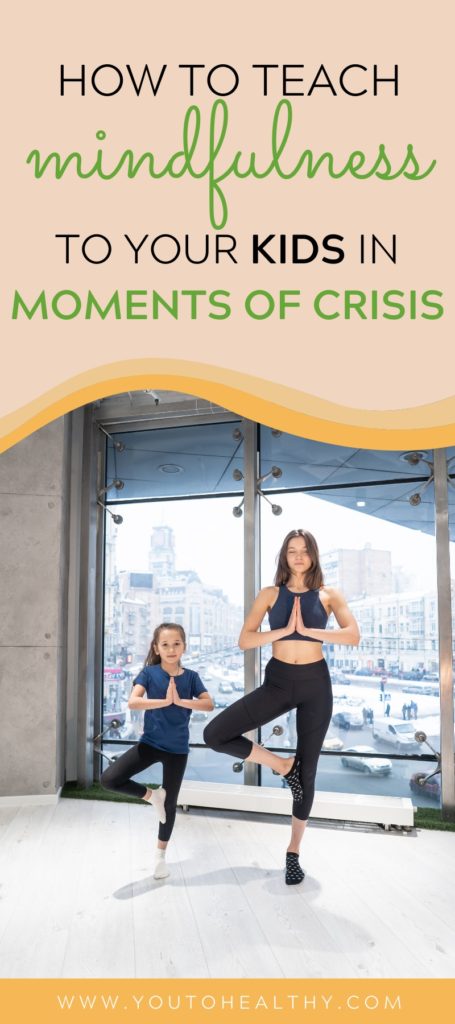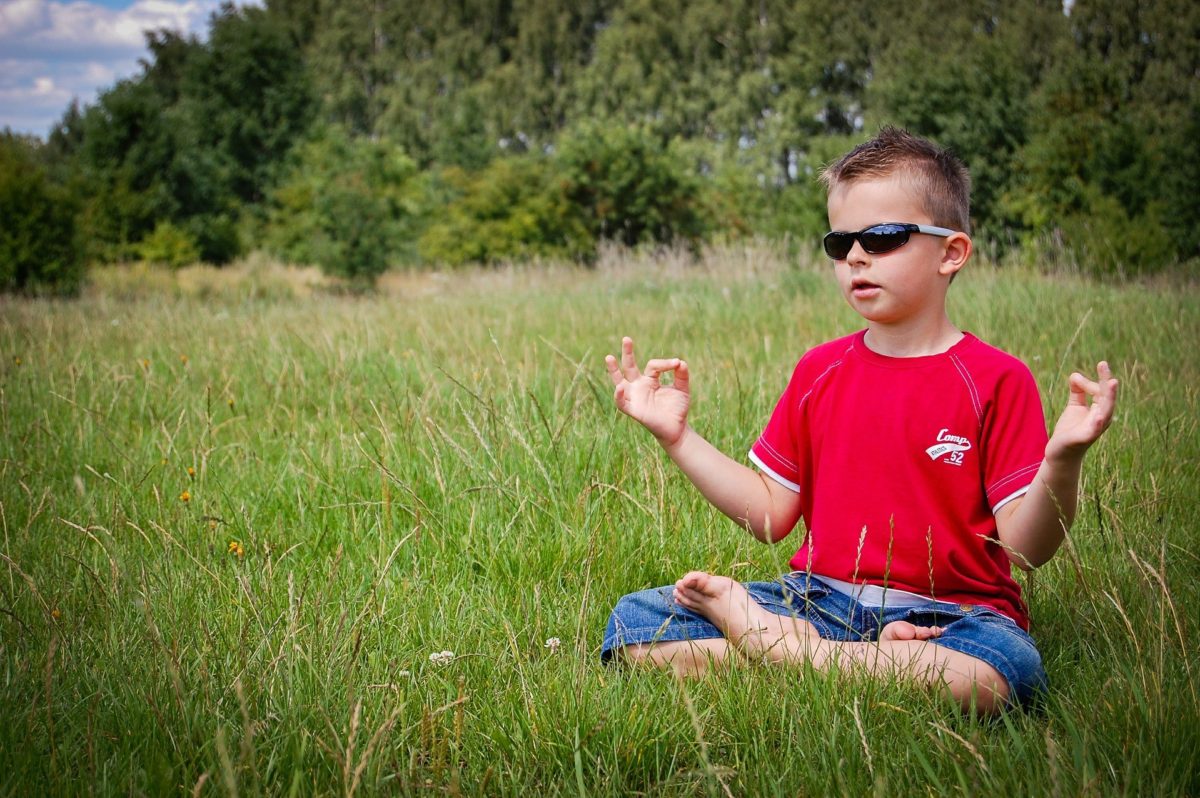Years back, when I worked as a teacher, one of the most fun and yet peaceful activities I used to do with the kiddos was yoga poses. The idea was not to make kids learn yoga, but to pass along mindfulness teaching to calm their minds and bodies. With that, we could transition easily to another activity.
We live in a world of “hyperactivity,” where we receive stimulus through all sources, especially from the technology surrounding us—smartphones, social media, tv, drones, billboards, and so forth.
On top of that, we are living in unprecedented times and much of the information we are receiving these days are not gleaming. So how can you teach mindfulness to your kids in these moments of crisis?
Assuming that you can barely wrap your mind around what is going on, as a parent or caregiver, it makes sense that the idea of teaching mindfulness to your kids would be a daunting task, right?
But it doesn’t need to be. First of all, you need to understand the concept of mindfulness. From there, you will be better prepared to think of what you can do to help your child be mindful.

What is Mindfulness?
According to the UCLA Mindful Awareness Research Center:
“Mindful Awareness is the moment-by-moment process of actively and openly observing one’s physical, mental and emotional experiences. Mindful Awareness has scientific support as a means to reduce stress, improve attention, boost the immune system, reduce emotional reactivity, and promote a general sense of health and well-being.”
In other words, mindfulness is a state of being here and now, connecting with one’s self.
You may think this concept is hard to grasp. In reality, it is not if you simply remember that mindfulness is a state of mind—the idea of staying in tune with the present. You are here and now. You are present, in the moment.
And you can be mindful and help your child accomplish this state of mind in several, simple ways:
1. Meditation
This is my favorite mindfulness technique. Why? Meditation allows you to take a deep dive into yourself. To explore and come to terms with your inner being and your emotions.
It also gives you focus and clarity. For instance, now, during these trying days or weeks, it is important to remain calm more than ever. This allows you to stop for a moment, think clearly, and take the best course of action when making decisions.
Learning to meditate is not only helpful to you, but it is also especially valuable for young children. That is because, again, it helps calm their minds. This can come in handy in a situation near chaos, when kiddos are all antsy or hyper and you’ve run out of options.
To meditate with the little ones, sit down comfortably in a quiet environment—it can be your bedroom, children’s bedroom, playroom, or basement…as long as it is quiet.
For some people, having a soothing meditation sound like singing bowls may help, but if you don’t have it, don’t worry.
Ask your child to take a deep breath and close their eyes while you also do the same. Along with your child, sit still, and take a few breaths (inhale and exhale slowly, concentrating on your breath). Try to relax and don’t think of anything.
Do this for three to five minutes, depending on how little or old your kids are. As they become used to the routine, you may gradually adjust the meditation time.
2. Breathing exercises
This one can complement the meditation or it can be done as a completely separate exercise.
For the little ones, you will use a slightly modified version of the breathing technique. You will ask your child to take a few deep breaths, inhaling through the nose and exhaling through the mouth.
Fill the belly during the inhale (belly expand), and let the air go during the exhale (belly contract).
The best part of this exercise is that you can do it anywhere and any way you want—whether you are sitting, standing, or lying down. Because they are proven effective to promote relaxation and reduce anxiety, it may come as a glove in moments of crisis.
3. Nature walk
What about taking the little ones for a purposeful walk? A nature walk.
Even with the restrictions on places you can go with your kids, you can still get them to go on a walk outside. Better yet, you can work on a nature exploration.
Tell the kiddos the importance of taking care of nature, the importance of the trees. What about asking about the tree cycle? While cruising, ask them what they hear. That may be a great opportunity to talk about birds and other animals.
By having these enjoyable conversations, you are engaging your kids in science without even thinking. And from these simple interactions, you may create long-lasting teachable moments.
4. Simple yoga poses
Doing yoga poses is another fun and simple way to teach your kids about mindfulness.
While doing the poses, they will work on a few breaths and concentration, bringing awareness to the here and now.
You can make this as fun and easy as it can be.
Here are three easy yoga poses that kids love to do and will help with their focus, relaxation, and balance:
- Anjali Mudra/Namaste Position – Sit up tall, comfortable, with hands to your heart in a sign of prayer. Ask your child to take a few deep breaths, inhaling and exhaling.
- Tree pose – This pose is great to work on kids’ balance and concentration. This post explains how to do it in detail.
- Cat Cow – From all-fours on your mat, inhale bringing the belly down like a cow with your forehead up. Then exhale, curling your back like a cat. Do this three to four times while paying attention to your breath.
Conclusion on Teaching Mindfulness to Kids
Teaching mindfulness to your kids might be a great way to bring awareness to your life, as well as theirs. So take advantage of these activities with your child and make the most out of the moment.




